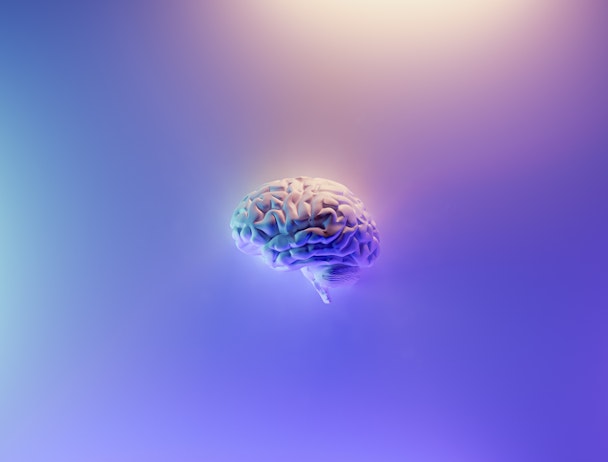Neurons and networks: How AI networks are like neurodiverse brains
Neural networks mimic the structure of a human brain. But as Connective3’s Tom Lanaway argues, not all human brains are ‘structured’ the same. So what happens when AI meets neurodiversity?

Will AI help or hinder neurodiverse people? / Milad Fakurian via Unsplash
In the vast tapestry of human cognition, there exist minds that function in uniquely fascinating ways. We call this neurodiversity.
Meanwhile, in the realm of technology, these diverse minds have crafted artificial intelligence (AI) systems inspired by the intricate connections of the human brain, like neural networks.
So while at first glance the topics of neurodiversity and AI may seem worlds apart, there is a curious parallel: the design and function of AI networks might have more synergy with neurodiverse brains than we ever imagined.
What is Neurodiversity?
Neurodiversity suggests that neurological differences among people should be recognized and respected just like any other human variation. Conditions like ADHD, autism, and dyslexia are not ‘disorders’ or ‘deficiencies,’ but simply different ways in which the brain interacts with the world. These differences lead to unique patterns of thinking, processing information, and interacting with the world.
Advertisement
What are artificial neural networks?
Artificial neural networks (ANNs) are a cornerstone of AI. They are computing systems inspired by the biological neural networks that constitute animal brains.
ANNs consist of layers of nodes (akin to neurons) that can process input and transmit data. Through a process of training, these networks adjust their internal structures and can identify patterns, make decisions, or even create art. Just as our brains evolve through learning, ANNs refine their performance over time.
Neurons: The building blocks
At the heart of the complex human mind are neurons, cells designed to transmit information. For neurodiverse people, these transmissions can occur differently, creating a unique difference in cognition. Take, for instance, the brain of someone with autism spectrum disorder (ASD). Research has often shown heightened connectivity within certain brain regions, leading to specialized strengths such as attention to detail or pattern recognition.
Someone with ADHD, meanwhile, may exhibit an altered distribution of neurotransmitters, resulting in variable attention spans and periods of hyperfocus, where they become deeply engrossed in specific tasks. These variances in brain wiring present both unique strengths and challenges, creating a spectrum of cognitive experiences and abilities.
The beauty neural networks, lies in their foundational inspiration from the human brain. Much like the interconnected web of neurons in our minds, artificial neural networks consist of nodes that process and pass on information. By adjusting weights (similar to our synaptic strengths) between these nodes based on input data, the network ‘learns’ and refines its function. This is a simplified representation of how our neurons adjust their synaptic strengths based on experiences and stimuli, a process called synaptic plasticity.
The design goal behind AI neural networks is to emulate this adaptability and information processing capability inherent in our brains. This is why AI, at its best, can mirror the diverse functionalities of the human mind, from pattern recognition to art creation.
Advertisement
Bridging the gap
Both neurodiverse individuals and advanced AI systems demonstrate an exceptional aptitude for pattern recognition and problem-solving. Consider individuals with ADHD: their brains operate on a particular wavelength, leading them to see connections and creative solutions that might elude others. This unique capability for creative ideation means they often excel in roles that value innovation and unconventional thinking. Just as these individuals can spot non-obvious patterns or solutions, deep learning AI algorithms have become incredibly adept at discerning patterns in vast amounts of data, whether for image recognition or predicting stock market trends.
Neurodiverse thinkers (including those with ADHD) have already made a significant impact in fields that thrive on innovation, thanks to their flair for creative ideation. Technology industries, which are always on the cutting edge, have begun to recognize and harness this potential, valuing the fresh perspectives and novel ideas these individuals bring.
AI, in parallel, can be an aid to neurodiverse individuals. For example, AI-driven tools can help manage the organizational challenges sometimes faced by those with ADHD, providing structure while allowing their creativity to flourish. And as AI evolves, its capacity for generating creative solutions, inspired by patterns it observes, could complement and be further enriched by neurodiverse thinkers, creating a synergy where both humans and machines learn from each other’s strengths.
Ethical and societal implications
As we meld technology and humanity more closely, we must remember that diversity isn’t just an ethical imperative; it's a strength. Neurodiverse people offer unique perspectives and skills, and by designing AI systems that recognize and value these differences, we’re not just building better technology. We’re building a better future.
While the convergence of AI and neurodiversity holds promise, it’s not without challenges. There’s a risk of AI systems inheriting societal biases, leading them to misinterpret or mishandle neurodiverse individuals. Moreover, there's the danger of oversimplifying the vast spectrum of neurodiversity, leading to tools or systems that don’t fully serve the community they’re meant to assist.
Suggested newsletters for you
Future horizons
The crossroads of AI and neurodiversity is rife with potential. We stand on the brink of a future where technology doesn’t just serve the majority but is finely tuned to individual needs. As AI systems grow more sophisticated, we may see them learning from neurodiverse patterns of thinking, leading to innovations we’ve yet to imagine.
In our quest to develop machines that think, let’s not forget the diverse ways in which humans think. By celebrating and understanding the spectrum of human cognition, we shape a world where every mind — organic or artificial — finds its place.
Content by The Drum Network member:

connective3
We create market leaders. We do this through the application of digital marketing strategy, adopting SEO, Content Strategy, Digital PR, PPC, Display, Social Media...
Find out more
